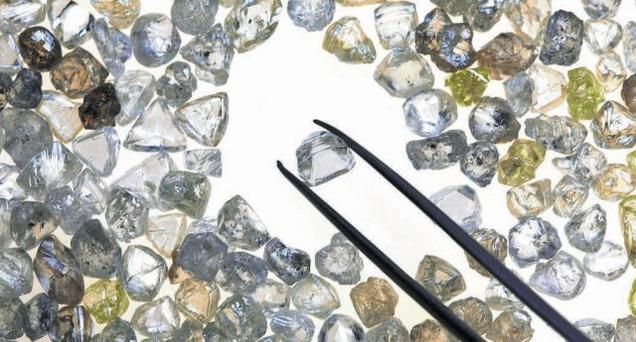Diamond trade loses its glitter as cash crunch caused by the ill-hought out move of demonetization has badly affected the business, run on cash flow. In a report put out by Reuters and published by Hindu Businessline, global diamond industry is facing disruption that could stretch through the first few months of next year, including Valentine’s Day in February, as a result of Prime Minister Narendra Modi’s move to abolish most of the nation’s cash overnight.

The report details how, in Surat, craftsmen usually spend 10-12 hours a day in small mills or grimy sheds cutting and polishing 80 per cent of the world’s diamonds but the business is based on cash and the demonetisation of the high-value banknotes from November 8 has prevented many from operating. Thousands of diamond brokers in the area’s narrow lanes are also doing little business.
Ishu Datwani, owner of Mumbai-based Anmol Jewellers, says his sales are down nearly 70 per cent since the government scrapped the high-value notes.
The demand is unlikely to revive any time soon as India struggles to dispense enough new notes, industry officials say.
“During the cash crunch, diamonds are one of the last things people want to buy. At least for the next six months, demand will remain weak,” says Praveenshankar Pandya, head of India’s Gem & Jewellery Export Promotion Council (GJEPC).
The crisis hit at a time when there were plenty of stones in the retail pipeline or being processed. India’s rough diamond imports between April and November jumped 30.5 per cent, while exports of cut and polished diamonds during the period rose 12.2 per cent, GJEPC data shows.
“Diamond processors bought rough diamonds aggressively, expecting a jump in exports and rising Indian demand, but now they are struggling,” said trader Dharmesh Navadiya.
Weaker demand, prices
Top diamond miners, such as Anglo American-owned De Beers and smaller Canadian producers such as Stornoway Diamond and Dominion Diamond are seeing weaker demand and prices for cheaper stones used in lower-priced jewellery. The picture for retailers and consumers is less clear. The cash crunch has also badly hurt consumer demand for diamond jewellery in India, the world’s third-biggest market.
That means there are more of the cheaper finished stones to export, helping to create a temporary glut and lower prices at wholesaler and store level. However, that may not last if the cutters and polishers of India can’t get back to work soon.
But the luxury buyer doesn’t have to worry. Much of the higher-value jewellery business, with the highest grade one-carat stones usually costing more than $14,500, is protected because cutting and polishing is also done in Israel, Belgium and by bigger Indian companies that rely on bank transactions.
“The knock-on effect of Indian demonetisation has meant a reduction in the prices of lower quality diamonds,” said Tobias Kormind, Managing Director of 77 Diamonds, an online jewellery retailer based in London. “As a result, we’ve seen an increase in demand for those kinds of diamonds as our clients have snapped up these favourable deals.”
Stuck with old stones
In trading hubs like Hong Kong, many retailers are stuck holding diamonds they bought three years back at higher prices expecting robust demand from China that didn’t materialise.
“Miners are already feeling the pain with some lower-quality stones being discounted by more than 25 per cent from prices before demonetisation,” said Panmure Gordon analyst Kieron Hodgson, in a recent note to clients.
In its final 2016 tender, De Beers said sales were affected by a slowdown in lower-value rough stones, a trend Hodgson expects to see repeated for at least the next three months.
Dominion Diamond, with stakes in two Canadian mines, expects its sales in its fourth quarter ending January 31 will be hurt by the Indian cash crisis, and sees weaker demand for small stones extending to its fiscal first quarter. Mountain Province Diamonds, which owns 49 per cent of Canada’s newest diamond mine, Gahcho Kue, indicated it isn’t overly worried. “Small diamonds are roughly 80 per cent of your production and 20 per cent of your revenue — and the demand for the large diamonds remains robust,” said CEO Patrick Evans. “Average prices are up 7-9 per cent this year, but small diamonds are down about 50 per cent.”
(This article was published on December 27, 2016)